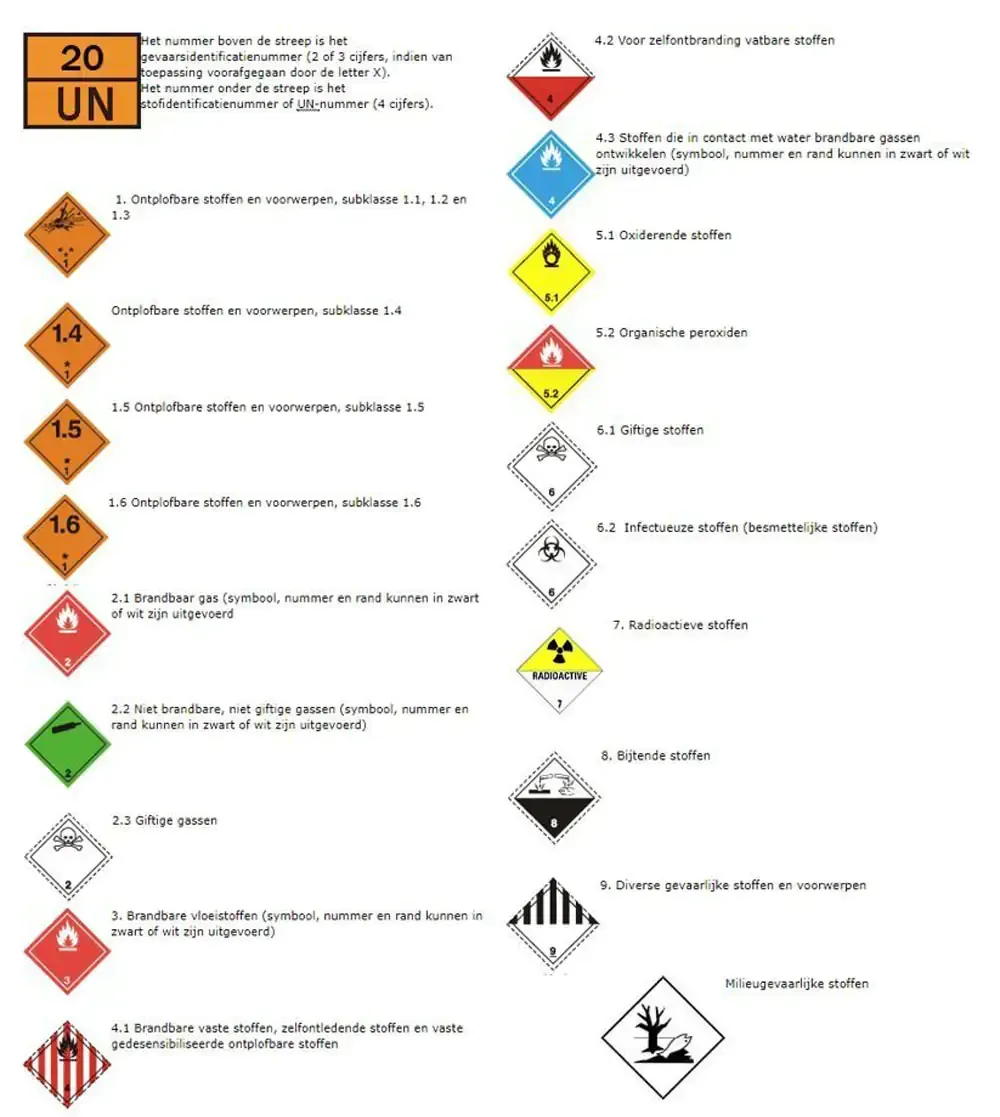Hazardous substances (ADR)
Hazardous substances (ADR)
The transport of hazardous substances, also known as ADR transport, is one of Belt Transport's specialties. Our selected carriers and regular charter partners are fully equipped for the safe execution of ADR transport. All drivers are qualified and each vehicle is equipped with the necessary equipment and materials to safely deliver your shipment of hazardous substances to its destination.
Tailor-made advice for ADR regulations
You can also count on Belt Transport's expertise for specific advice regarding your ADR transport in the Supply Chain. Whether it concerns transport to Southern Europe or Central Asia, we are ready to work with you to find the most suitable solution for the safe delivery of your hazardous substances and goods to the desired destination.
Our expert advisors and planners are continuously aware of the current legislation regarding ADR transport and can provide you with tailor-made advice. This way you are always assured of correct handling and you will not be faced with any unpleasant surprises. Do not hesitate to contact us and receive advice or a tailor-made quote for your ADR transport without any obligation! ADR classes for road transport
Your transport of hazardous substances can be arranged in almost all cases. Our regular transporters are specialized in almost all ADR classes. Does your shipment contain products that belong to ADR classes 2, 3, 4.1, 4.2, 4.3, 5.1, 5.2, 6.1, 6.2, 8 or 9? Then Belt Transport is the right place for safe transport. Hazardous substances are classified into ADR classes.
The hazard classes group together substances that may pose similar risks during transport:
- Class 2: Gases - Pure gases or gas mixtures, such as nitrogen, propane, LPG and argon. Class 3: Flammable liquids - Liquids that are flammable under certain conditions. Class 4.1: Flammable solids - Easily flammable solids in granular, powdered , metal or paste form.Class 4.2: Substances liable to self-ignition - Substances which can ignite with oxygen from the air without a source of ignition.Class 4.3: Substances which evolve gas on contact with water - Substances which produce flammable gases in response to contact with water .Class 5.1: Oxidizing substances - Substances that are not flammable themselves, but cause fire in other substances. Class 5.2: Organic peroxides - Chemically unstable substances that can self-decompose, mainly as additives for plastics. Class 6.1: Toxic substances - Substances that harmful to human health or fatal by inhalation, skin contact or ingestion. Class 6.2: Infectious substances - Substances that can cause disease in humans or animals. Class 8: Corrosive substances - Chemicals that attack the skin or mucous membranes, such as battery acid, hydrochloric acid or sulfuric acid. Class 9: Miscellaneous dangerous substances and objects - Substances that pose risks during transport, but do not fall into ADR classes 1 and 7.
Please note: We do not handle shipments that fall under class 1 and 7. Regulations for ADR goods
Various regulations apply to the transport of dangerous ADR goods:
- Regulations prior to transport, including packaging, labeling and drawing up the necessary documents. Regulations for the loading of the vehicle, such as stowage and the combination of different loads. Regulations for the vehicle itself, including the use of orange plates and personal protective equipment .Regulations for traveling, including carrying and having fire extinguishers available and following specific routes in tunnels.
The basis for the application of these regulations is the substance list in the ADR, which includes all ADR goods with their substance identification number, also known as the UN number. The regulations for the transport of hazardous substances are largely based on recommendations from the United Nations (UN). These recommendations are included in the 'Recommendations on the Transport of Dangerous Goods', also known as the 'orange book'. At European level, road transport rules are determined by the Economic Commission for Europe (ECE). Within the ECE, the Working Party on the Transport of Dangerous Goods (WP15) is responsible for translating the UN recommendations into the ADR.
Companies involved in the transport of dangerous ADR goods are obliged to take measures to secure their activities. These regulations distinguish between measures for 'normal' classified substances and comprehensive security plans for 'very high-risk' substances. The latter can have serious consequences if used incorrectly or maliciously, such as in the event of a terrorist attack. The security regulations apply to the entire transport chain. 'High risk' dangerous goods include:
- Certain explosive substances. Flammable gases in tanks, for example LPG. Toxic gases such as ammonia. Highly flammable liquids in tanks, such as petrol and acetone. Fertilizers containing ammonium nitrate. Very toxic, very infectious and very corrosive substances.
The abbreviation ADR has its origins in the French treaty concluded in 1957. This treaty contains provisions relating to the transport of dangerous goods. There are countless different ADR labels and ADR signs, all related to the transport of dangerous ADR goods by road. Within road transport we can make further distinctions between package transport, tank transport and loose dangerous goods. When transporting substances and products with the relevant hazard classification by road, the following ADR labels and ADR signs (with UN number) are mandatory:

Safety advisor
Belt Transport has a qualified Safety Advisor. Your cargo is therefore in safe hands with us. Our advisor is continuously aware of the latest developments and is continuously trained in the current ADR legislation and can provide you with tailor-made advice. Storage of dangerous ADR goods
Do you need temporary or structural storage of your ADR goods? Belt Transport can also relieve you in this area. Due to safety restrictions, we have chosen to provide this storage externally, namely at the location of our ADR partner nearby in Rotterdam.





